As we know, every word and letter in the Torah serves a precise and specific function; hence, Chazal fittingly devote much time toward expounding the Torah’s text to clarify its meaning and derive the particulars of its laws.
Semichus Significance
In any event, one of their methods of exposition involves not only the words themselves, but their arrangement. This device is known as “smichus – adjacency,” whereby Chazal delve into the reasons why one verse or section is placed next to the other. One classic example relates to the prohibitions associated with lashon hara (evil gossip), which Chazal understand to be the focus of the verse: “Lo sisa sheima shav – Do not uphold a slanderous report” (Shemos 23:1). Now, the verse immediately preceding this one dealt with the issue of meat rendered forbidden for consumption (basar treifah); rather than eat it, the Torah instructs: “lakelev tashlichun oso – throw it to the dogs” (ibid. 22:30). Observing the juxtaposition of these two matters, Chazal understand the Torah’s intent as underscoring the extreme severity of the sin of lashon hara. Hence the Gemara declares about someone who engages in lashon hara that “ra’uy l’hashlicho l’kelavim – he is worthy to be thrown to the dogs” (Pesachim 118a).
Another prime example of smichus along related lines occurs with this week’s parshah, which deals extensively with the laws of tzara’as. This, of course, is that supernatural skin-condition that afflicts those people who speak lashon hara (Arachin 15b). The question that arises, then, is why a parshah devoted to this topic follows on the heels of the previous parshah, Shemini, which concluded with an elaboration on the laws of forbidden foods. In clarifying the connection, R’ Yisrael Salanter, the great master of mussar (ethical teachings), perceives herein a poignant message. The section of forbidden foods as contained in the preceding parshah lists such prohibited items as the meat of chazerim (pigs) – a law that is well known and widely observed. But the Torah sought to convey that we should be just as careful with what leaves our mouths as we are with what we put into them. In the section of Shemini dealing with forbidden foods, the Torah frequently invokes the terminology of “tumah” (defilement) and “shikutz” (repulsiveness). In this week’s parshah, the Torah likewise discusses the ritual tumah associated with the condition of tzara’as. The lesson to be drawn, then, is that the debasement resulting from lashon hara is no less severe than that connected with pork and the like.
The Chafetz Chayim provides an elaboration on the above, which actually combines both examples of semichus in a most interesting way. Before relating his words, however, it would be helpful to first provide some brief background.
Unwanted Consequences
The Mishnah (Ohalos 11:7) imparts some information about the digestive capacities of a dog:
כַּמָּה תִשְׁהֶה בְמֵעָיו, שְׁלשָׁה יָמִים מֵעֵת לְעֵת.
“How long does (its food) remain in its innards? Three twenty-four hour periods.”
(The Mishnah broached this topic in the course of its discussion of the laws of ritual impurity. The connection is somewhat complex and is beyond the immediate concern of our subject matter.) In any event, the Gemara (Shabbos 155b) perceives this arrangement as a manifestation of Divine kindness, designed in response to a dog’s particular circumstance. The passuk states: “Yodei’a tzaddik din dalim” (Mishlei 29:7), the simple translation of which could be rendered: “The righteous knows the judgment of the indigent.” But the Gemara understands this “Tzaddik” as referring to Hashem – the “Righteous One” – and identifies the indigent one as the dog, who has a difficult time procuring sustenance. Thus, as Hashem is aware of the dog’s “indigence,” He specifically arranged the dog’s anatomy to accommodate its meager rations. The little food that he finds and consumes will continue to satiate him for a prolonged period, for, as the Mishnah stated, it remains in his tract for a full three days.
The Gemara there continues with another teaching along these lines, contrasting the dog with a different member of the animal kingdom – the pig. (These, of course, are the same two creatures that were the subjects of last week’s Mishnas Chayim.) The Gemara cites R’ Papa, who declares: לֵית דְעַנְיָא מִכַּלְבָּא, וְלֵית דְעַתִּיר מֵחֲזִירָא – “There is no (animal) poorer than the dog, and there is none as wealthy as the pig.” Rashi understands this statement in reference to their consumption habits. We have already seen that a dog’s fare is quite meager. But a pig is very non-discriminatory when it comes to its meals and will take almost anything; hence, he is quite “wealthy,” as his sustenance is available in abundance.
However, the Chafetz Chayim offered a homiletic interpretation, relating it to the lesson conveyed by R’ Yisroel Salanter. We have already seen above an association between dogs and the prohibition of lashon hara; this was the subject of the first example of semichus, which relayed how a violator of this prohibition is “worthy to be thrown to the dogs.” And so, the Chafetz Chayim understands the Gemara here as contrasting the prohibitions of lashon hara and consuming pork. The “chazer” – that is, the prohibition against pork – is comparatively “wealthy” in that it enjoys widespread adherence amongst the general populace. But the prohibition against engaging in lashon hara is quite “poor” in comparison. Many of the same people who would never even dream of sampling a piece of pork are nevertheless careless or oblivious when it comes to the prohibition of the “dog” – i.e., lashon hara.
The Chafetz Chayim related this exposition one time at a gathering of the generation’s sages that took place in Vilna. The Chafetz Chayim, of course, was renowned for his promotion of the important endeavor of shmiras halashon – guarding one’s tongue from speaking lashon hara. Thus, he once again sought to draw attention to this vital cause. And so, in light of this teaching, he proposed that the underlying message should be publicized: namely, that the prohibition against lashon hara is on at least equal footing with that of eating pork. But his colleague R’ Chayim Ozer Grodzenski raised a potential objection to the proposal. He agreed with the sentiment, of course, but shared a concern about unwanted consequences. Given the atmosphere of the times, he worried that people would draw the wrong lesson. Instead of recognizing the gravity of lashon hara, he feared that a comparison of these two prohibitions would cause people would come to be more lax about consuming forbidden foods! (Chafetz Chayim Hachadash al HaTorah, parshas Tazria)







